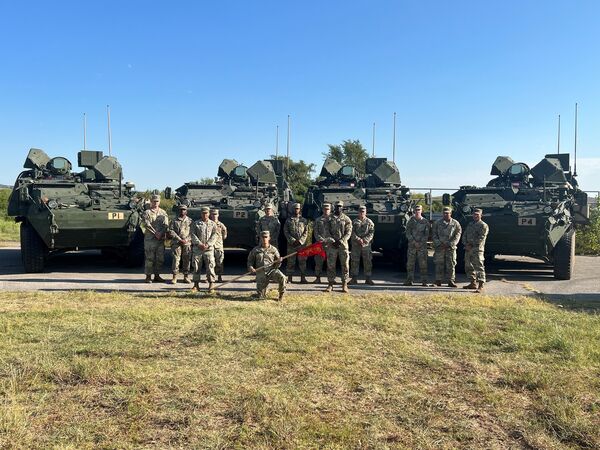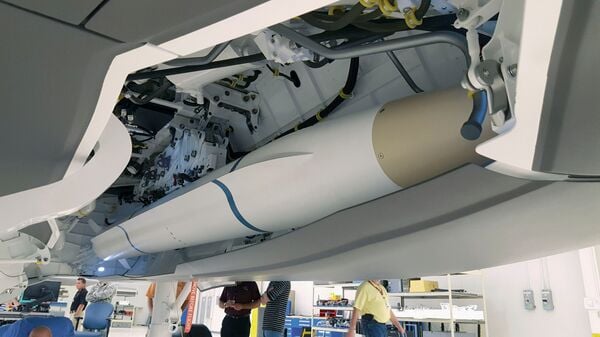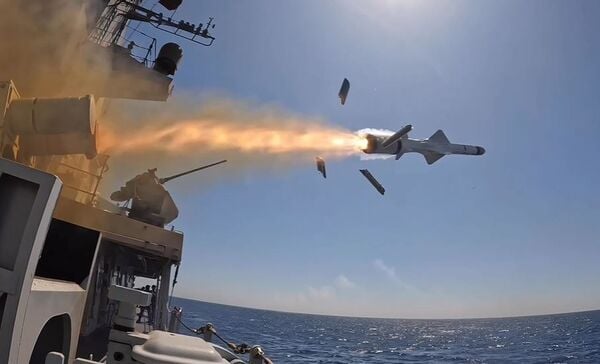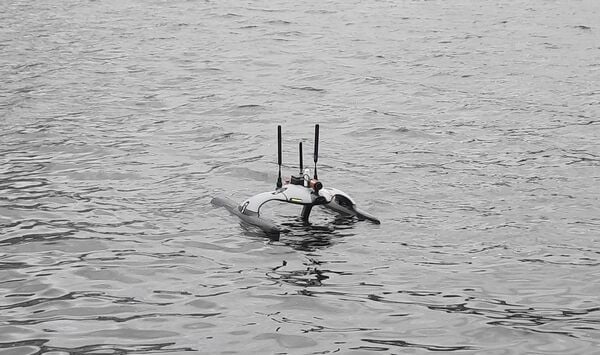- About
- Intara
- Capabilities
- Advisory
- Resources
- News
- Store
FAVS 2023: US Army receives first DE M-SHORAD laser system prototypes
14 November 2023
by Nicholas Fiorenza


The RCCTO delivered four DE M-SHORAD prototypes to the 4th Battalion, 60th Air Defense Artillery Regiment, at Fort Sill, Kentucky, on 7 September. (US Army)
The US Army Rapid Capabilities and Critical Technologies Office (RCCTO) delivered four Directed Energy Maneuver-Short Range Air Defense (DE M-SHORAD) prototype systems mounted on Stryker 8×8 vehicles to the 4th Battalion, 60th Air Defense Artillery Regiment, at Fort Sill in Kentucky, on 7 September, Colonel Steven Gutierrez, RCCTO project manager for the system, said at the first day of SAE Media Group's Future Armoured Vehicles Survivability (FAVS) 2023 conference, held in London from 13 to 15 November. He said the 50 kW laser requires no ammunition supplies, with “the cost per shot [costing] pennies on the dollar”.
He said two more prototypes were planned and the systems would be integrated into the US Army corps level command-and-control. Col Guterriez reported that the US Army tested DE M-SHORAD against 50 target sets during exercises between February and March, including rotary- and fixed-wing unmanned aircraft systems (UASs) and mortar rounds. The system is designed to counter Class 1–3 UASs and rockets, artillery, and mortars (RAM).
Netherlands, Poland approved for AARGM-ER SEAD/DEAD missiles
25 April 2024
by Gareth Jennings


An AARGM-ER seen being test fitted into the internal weapons bay of an F-35 combat aircraft. The US has approved the sale of the missile to both the Netherlands and Poland. (Northrop Grumman)
The US government has approved the sale of the Northrop Grumman AGM-88G Advanced Anti-Radiation Guided Missile – Extended Range (AARGM-ER) to the Netherlands and Poland.
Announced by the US Defense Security Cooperation Agency (DSCA) on 24 April, the approvals cover 265 of the suppression of enemy air defences/destruction of enemy air defences (SEAD/DEAD) missiles for the Netherlands for approximately USD700 million, and 360 missiles for Poland for approximately USD1.275 billion. Both approvals cover related equipment, training, and support.
“The proposed sale will improve the Netherlands'/Poland's capability to meet current and future threats by strengthening its self-defence capabilities to suppress and destroy land- or sea-based radar emitters associated with enemy air defences. This capability denies the adversary the use of its air-defence systems, thereby improving the survivability of the Netherlands'/Poland's tactical aircraft,” the DSCA said of both approvals.
Indonesia to restart procurement process for more Exocet missiles
18 March 2024
by Ridzwan Rahmat


An Exocet MM40 Block 3 missile being launched from an Indonesian Navy Bung Tomo-class frigate. The country's latest attempt to replenish its stock of Exocet missiles has been delayed by non-conformity issues. (Indonesian Navy Armada I)
Indonesia will have to restart a process to replenish the country's stock of MBDA Exocet MM40 Block 3 anti-ship missiles after an earlier attempt failed because of licensing non-conformity issues.
A 24 February letter from the Indonesian Ministry of Finance's (MoF's) Directorate General of Budget Financing and Risk Management sent to various departments at the country's Ministry of Defense (MoD) confirmed that a previously granted permission to procure the missiles with foreign loans has now lapsed.
A copy of the letter was provided to Janes on 18 March by sources close to the procurement process.
In the letter, the MoF advised the respective MoD departments to resubmit a request for a total of three programmes for which the permission to take on foreign loans has lapsed, including the Exocet missile procurement.
EvoLogics preparing further deliveries of Sonobot USVs to Ukrainian armed forces
18 March 2024
by Neil Dee


EvoLogics Sonobot 5 USV being demonstrated at Oceanology International 2024 in London on 13 March. (Janes/Neil Dee)
German company EvoLogics is planning to deliver a further batch of Sonobot unmanned surface vehicles (USVs) to the Ukrainian armed forces. EvoLogics CEO Fabian Bannasch told Janes at Oceanology International 2024, held in London on 12–14 March, that his company is “currently preparing a fourth configuration of Sonobot with enhanced underwater data networking and positioning capabilities in order to guide and support complex underwater missions with dive teams, and AUVs [autonomous underwater vehicles] where the Sonobot will be the gateway buoy at the surface” for the Ukrainian armed forces. Sonobots are a family of small USVs of about 1.3 m in length that can be folded and transported by a single person.
The US Army Rapid Capabilities and Critical Technologies Office (RCCTO) delivered four Directed Ener...
Latest Podcasts
Iran Israel analysis
In this podcast Janes analysts discuss the Iranian attacks on Israel on the 14 April. They highlight the military systems used by Iran and the performance and impact of these on Israel. They also discuss the implications of this attack goi...
Listen nowJanes Case Studies
Using Janes Intara to build a common intelligence picture: Russian build up on the Ukrainian border
View Case StudyNews Categories
 Weapons Details
Weapons Details